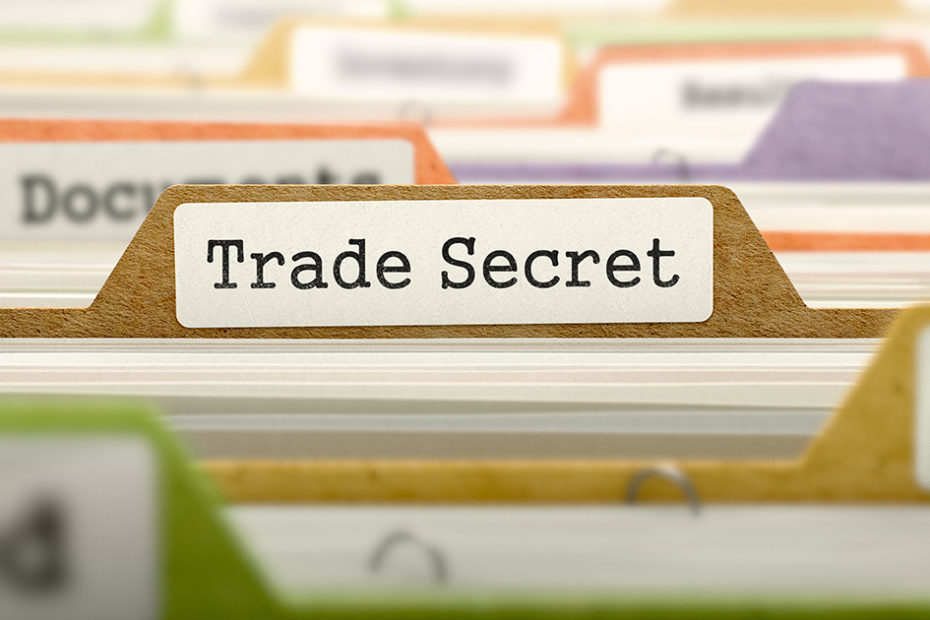The Value of a Customer List
Without paying customers no business can survive. For almost all business owners, the life-blood of their business is their customer or client list. A customer list is really just another way of saying the list of previous, satisfied customers, or “goodwill.” Those previous customers are perhaps the best source of repeat business or new referrals. After all, a list of people who have already purchased a product is substantially more valuable than a list of people who only might be interested in purchasing it.
A customer list also gains value because of the costs incurred to build it. Through the investment of a great deal of time and money in building relationships and providing excellent goods or services, a business owner painstakingly develops a network of people who will hopefully keep money flowing into his or her business.
Empowering Employees to Foster Customer Connections
However, as a business grows, the owner must bring in employees to help. Those employees are often exposed to the owner’s customers. By directly servicing those customers themselves on behalf of the business owner, the employee becomes familiar with the customers and builds their own sub-relationship. The customer may begin to think of the employee rather than the company as the “go-to” person that can satisfy their needs and answer their questions. By allowing this exposure and connection between customer and employee, the business owner takes a calculated risk and knows that one day the employee may leave the company, join a competitor or start their own business, and try to take those customers with them.
Legal Authority for Deeming Customer Lists as Trade Secrets
As many people know, the law of the state of California generally prohibits non-competition clauses in employment contracts. It is generally the policy of the courts to foster competition and a free-market economy. However, there is an exception to this rule in the context of customer lists. In particular, customer lists have been deemed by the courts to be bona fide “trade secrets.”
Under the California Uniform Trade Secrets Act (“CUTSA”), codified at Civil Code §3426, et seq., and prior common law, a customer list may be a trade secret depending upon the nature of the business and characteristics of the customer base.
In particular, the statute defines trade secrets as follows:
Information, including a formula, pattern, compilation, program, device, method, technique, or process, that: (1) Derives independent economic value, actual or potential, from not being generally known to the public or to other persons who can obtain economic value from its disclosure or use; and (2) Is the subject of efforts that are reasonable under the circumstances to maintain its secrecy.
Civil Code §3426.1(d).
The courts have generally held that an employer’s customer list may be deemed a “trade secret” under CUTSA. In particular, the more difficult information is to obtain, and the more time and resources expended by the employer, the more likely a court will find such information to be a trade secret. Courtesy Temporary Serv., Inc. v. Camacho (1990) 222 Cal.App.3d 1278, 1287. However, the employer must have spent time and effort identifying customers with particular needs or characteristics. San Jose Const., Inc. v. S.B.C.C. Inc. (2007) 155 Cal.App.4th 1528, 1539.
Characteristics that support a claim for trade secret protection include the following:
- Products or services that are inherently difficult to sell. See American Credit Indem. Co. v. Sacks (1989) 213 Cal.App.3d 622, 631.
- Customer profiles containing specialized information on each customer that was not readily accessible to competitors and that may be decisive in gaining their patronage, such as their buying habits, product preferences, names of decision makers. See Aetna Bldg. Maint. Co. v. West (1952) 39 Cal.2d 198, 205.
- Knowledge regarding the special needs or susceptibilities of a customer, as opposed to price, quality, reliable delivery and efficient service, is more likely to constitute a trade secret. Hollingsworth Solderless Terminal Co. v. Turley (9th Cir. 1980) 622 F.2d 1324, 1333-1334.
Cases in which the courts have found a customer list to be trade secret meriting legal protection include the following:
- Morlife v. Perry (1997) 56 Cal.App.4th 1514 (former employee of a roofing inspector was found to have misappropriated trade secrets by grabbing the stack of business cards he accrued during his employment with plaintiff and attempting to solicit their business when he went to go work for a competitor).
- Camacho, supra, (former employees who covertly formed their own business to compete with plaintiff’s temporary employment agency while still working there, and then who began to solicit plaintiff’s customers after they left and divert them to a competitor).
- ABBA Rubber Co. v. Seaquist (1991) 235 Cal.App.3d 1 (former employee of rubber roller manufacturer who knew which customers were consumers of their products and that information was not widely known and the employer benefited from access to that information).
- Klamath-Orleans Lumber, Inc. v. Miller (1978) 87 Cal.App.3d 458 (former employees quit and then began a narrowly-tailored marketing campaign directed towards 88 of the employer’s hand-picked customers in an industry with thousands of potential customers).
- Sacks, supra, 213 Cal.App.3d 622 (client list, the expiration dates of employer’s customer’s insurance policies, lists of all leads for potential business, claims histories, and other information concerning the special needs of clients).
In those cases, as well as others, the courts have held that a customer list is a trade secret. In particular, courts have found that a customer list has economic value because its disclosure would allow a competitor to direct its sales efforts to those customers who have already shown a willingness to use a unique type of service or product as opposed to a list of people who only might be interested.
Nor does the fact that the former employee learned the trade secrets through their employment alleviate their obligation not to take advantage of that information after they leave the company. While it is true that the former employee cannot “wipe clean the slate of memory,” providing personal services to a customer whose identity is a trade secret does not render the customer fair game for solicitation. Sacks, supra, at 636.
Stated differently,
Trade and business secrets and confidential information are the property of the employer and cannot be used by the employee for his own benefit. A list of subscribers for service, built up by ingenuity, time, labor, and expense of the employer, is a part of the goodwill of his business and in some instances, his entire business.
Greenly v. Cooper (1978) 77 Cal.App.3d 382, 392.
In other words, the law recognizes that business owners invest substantial amounts of time and money in developing their customer list, and that those investments must be protected if businesses are to succeed. Customer lists are the intellectual property of the business that creates them, just like a patent, copyright or trademark. Without legal protection, these assets lose their value and businesses will fail.
Some Customer Lists Are Not Trade Secrets
However, if the information is readily-available to the public from business directories and the like, that information is not likely to be deemed a trade secret. Such lists are to be distinguished from mere identities and locations of customers where anyone could easily identify the entities as potential customers. Klamath-Orleans Lumber, supra at 461. Courts are generally reluctant to protect customer lists to the extent that they embody information that is “readily ascertainable” through public sources, such as business directories. American Paper & Packaging Products, Inc. v. Kirgan (1986) 183 Cal.App.3d 1318, 1326.
On a related note, a plaintiff bringing a trade secret claim has to be detailed and specific about the trade secrets it is suing over. In particular, they must serve the defendant with a “Trade Secret Designation” pursuant to Civil Code §2019.210, that identifies the subject trade secrets with sufficient particularity. This law has the effect of inhibiting “fishing expeditions” wherein a former employer who merely suspects that a former employee is stealing their customers, but does not know which customers they might be and simply hopes to find something during discovery. CUTSA prohibits any discovery from taking place until the trade secret designation has been made by the plaintiff. This also prevents a large former employer from trying to drive former employees who are now competitors out of business with vexatious and costly litigation.
Finally, plaintiffs have a steep hill to climb in mustering evidence. To ultimately prove their case, they theoretically need to subpoena current and/or former customers for deposition and/or trial and have them confirm that the former employees did indeed lure them away. Dragging customers into a lawsuit is usually not a good way to win back their business.
An Ounce of Prevention
How does one harness these concepts and apply them in practice? One way to guard against losing customers to former employees is to have employees sign contracts upon hire, or as a condition of continued employment, wherein they acknowledge that the company’s customer list is a valuable trade secret and that they will refrain from attempting to steal the customer list during their employment or when their employment ends. If the employee violates the agreement, the employer has a cause of action for breach of contract, as well as trade secret misappropriation and certain common law torts. Adding clauses to the employment contract that make the breaching employee liable for liquidated damages and/or attorney’s fees can also serve as an added deterrent. However, such contracts may ultimately be deemed unenforceable in court.
It is also important to note that more than just a contract is necessary. The company must continue to treat the customer list a secret, and limit access to the information contained therein to only a few key, higher-level employees. If the customer list becomes common knowledge around the office or beyond, it loses its trade secret character.
A Pound of Cure
Sometimes the contract and diligent secrecy is not enough and a former employee will decide that it is in their best interest to go ahead and steal the customer list anyway. In those cases, the employer is well within their rights to file a lawsuit against the former employee or the former employee’s new employer, alleging breach of contract, misappropriation of trade secrets, and various other causes of action. Such cases are difficult and cut against the general grain of non-competition. However, if handled properly and seen through to the end, they may be successful.


